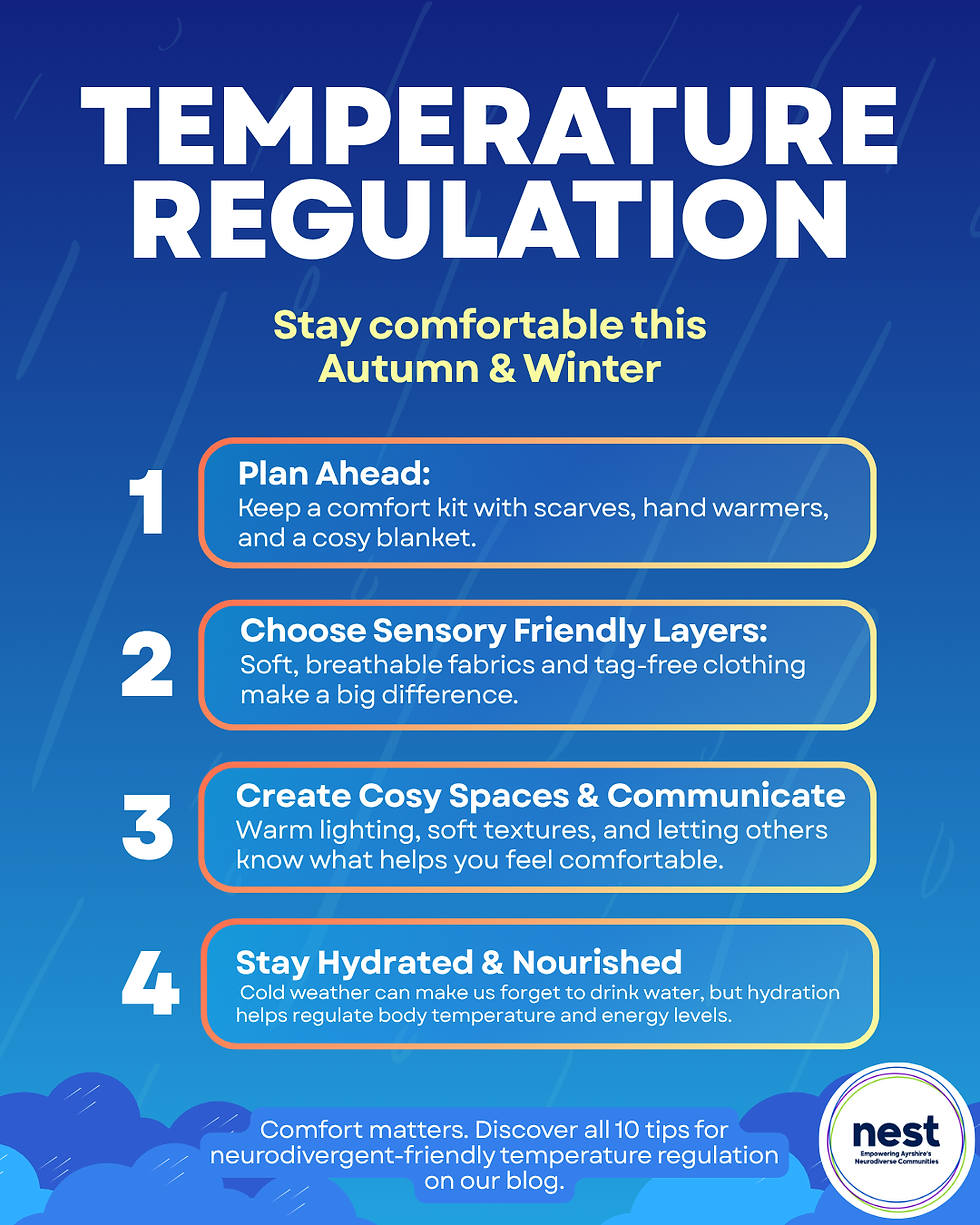Making Sense of Sensory – Week 1 Over-Sensitivity vs Under-Sensitivity 🌟
- Celine Dyer

- Jul 4
- 3 min read
Updated: Jul 24
When we think about the senses, we often picture the five familiar ones — sight, sound, smell, taste, and touch. But there’s so much more going on beneath the surface.
Our brains are constantly filtering and responding to sensory input, not just from the environment around us, but also from within our bodies.
For neurodivergent individuals, sensory processing can look and feel very different. This week, we’re kicking off our Making Sense of Sensory series by looking at two key concepts:
Over-sensitivity (hypersensitivity) Under-sensitivity (hyposensitivity)
Understanding these differences can transform how we view behaviour, moving us from confusion or frustration to empathy and practical support.
Over-Sensitivity: When the World Feels Too Loud, Too Bright, Too Much
For someone who is over-sensitive, everyday sensations can feel overwhelming, intense, and even painful. Their brain is taking in sensory information like a megaphone - amplifying the input and flooding their nervous system.
You might notice:
Blindingly bright – lights feel harsh or painful, especially fluorescent or flashing ones 💡
Painfully loud – even normal volume sounds can feel like shouting 🔊
Suffocatingly strong – smells like perfume, cleaning products, or food are overwhelming 🌬️
Excruciatingly scratchy – clothing tags, seams, or certain fabrics feel unbearable 🏷️
Texture minefield – certain food textures can trigger gagging or refusal 🍝
Touch feels trapping – hugs, hand-holding, or unexpected contact can feel suffocating 🔒
Spinning = Sick – avoids swings, roundabouts, or fast movement 🎢
Body alarm always ringing – feels every ache, hunger pang, or internal sensation intensely ⏰
These aren’t exaggerations. They are real, valid, neurological responses. Imagine trying to stay calm, listen, or learn while your jumper feels like sandpaper and the classroom lights feel like a spotlight.
That’s what over-sensitivity can feel like.

Under-Sensitivity: When the World Feels Too Quiet, Too Dull, Too Far Away
On the other end of the spectrum, someone who is under-sensitive may barely register sensory input. Their brain needs more stimulation to feel balanced or even aware.
You might notice:
Dazzled by lights – seeks out twinkling lights, screens, or moving visuals 🌈
Sound is soothing – loves loud music or repetitive noises for focus or calm 🎵
Can’t resist a whiff – often smelling objects, people, or unusual things 👃
Craves messy play – loves paint, slime, sand, and getting hands-on 🎨
Seeks sour, spicy & strong – prefers intense flavours or textures 🌶️
Never dizzy, always moving – constantly spinning, jumping, or crashing into things 🌀
Big hugs = big comfort – craves tight squeezes, heavy blankets, or firm pressure 🤗
Misses the need to go – doesn’t notice hunger, tiredness, or when they need the toilet 🚽
These individuals aren’t being “naughty” or “over the top” — they are seeking input because their body and brain are telling them they need more to feel regulated and present.

What You Might Hear 💬
From caregivers, teachers or even professionals, you might hear:
“They’re always touching things.”
“They freak out at smells no one else notices.”
“They won’t eat anything unless it’s super plain.”
“They won’t stop moving.”
“They act like they don’t feel pain!”
“They melt down for no reason.”
These aren’t behaviour problems — they’re sensory communication.
Why It Matters 🧠
Recognising sensory sensitivities changes everything.
It allows us to:
Respond with support, not punishment.
Reduce distress and improve regulation.
Personalise environments at home, school, and in the community
Strengthen understanding between adults and children.
Celebrate sensory differences instead of suppressing them.
Every brain is different. Some need less. Some need more. Both need understanding.
How Can We Support? 🌟
Here are a few tips for starting gently:
Offer choice in clothing or lighting.
Allow headphones or sensory tools without stigma.
Don’t force hugs — offer alternatives like high-fives or weighted toys.
Provide movement breaks and safe spaces.
Avoid masking or suppressing sensory needs — support expression instead
What’s Next? 👀
In the coming weeks, we’ll take a deeper dive into each sense - one at a time - exploring what over- and under-sensitivity might look like, how it shows up in daily life, and how we can respond with curiosity and care.
Let’s keep Making Sense of Sensory - together 💙







Comments